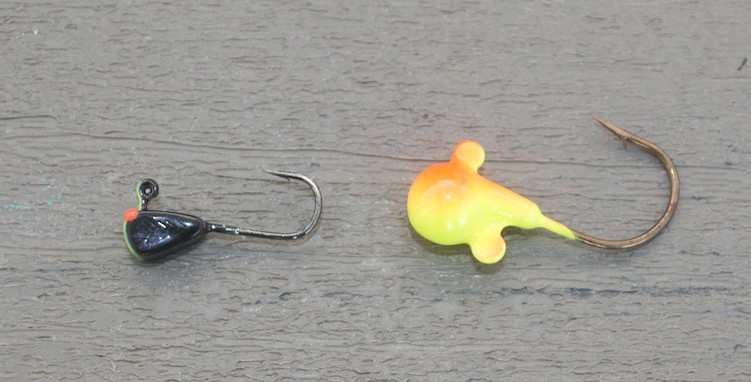Changes In Ice Fishing

CHANGES IN ICE-FISHING
By Bob Jensen
There’s still no ice on the local pond where I often start my ice-fishing season, but the weatherman says ice isn’t too far away. I hope the weatherman is right. All my stuff is ready to go. As I was organizing my ice-fishing gear, I realized how far we’ve come in how we fish through the ice and the equipment we use to do so. Let’s take a look at that topic.
In the early 1980’s, ice-fishing pioneer Dave Genz created the first portable ice-fishing platform. He called it a Fish Trap. By today’s standards the original Fish Trap was simple, some might even call it crude, but it sure did change how we fished through a hole in the ice. The Fish Trap was a tub with a chair that an angler could pull from hole to hole. It had a pull-over cover to cut the wind, an angler could carry gear in the tub, sit in the chair and fish comfortably. Ice anglers immediately recognized the utility of the Fish Trap. Dave’s creation has evolved to a point that some anglers call it a “Bass-Boat” on ice. They’re warmer, lighter in weight, have storage areas for gear, and pull easily on the ice. They’ve even spawned a new generation of portable shelters often referred to as a hub. Hubs could be described as a lightweight tent that sets up quickly and can easily be home to four ice-anglers. Hubs are much roomier. Whether a hub or a Trap, these blue shelters can be seen on the ice in large numbers wherever ice-anglers ice-fish.
The drills that we use to put holes in the ice have changed too. Not so long ago we used ice-augers that required a gas/oil mixture. Today we’re using electric augers. They’re quiet, lightweight, and the K-Drill can put lots of holes in the ice with a single battery. Electric augers make moving from hole to hole a more lightweight job, and the quiet operation is appreciated also.
Ice-fishing baits, boy have they changed! We can fish small baits more effectively due to the introduction of tungsten as a material for making ice-baits, and there are times when small baits make a difference. I remember an ice-fishing trip sometime in the early part of the 21st century. It started in South Dakota. We were fishing perch with eighth ounce spoons. The spoons were probably no more than two inches long. We caught a lot of perch on those spoons. A couple of days later we were after perch in Wisconsin. Since the perch in South Dakota liked the spoon that I was using, I used the same spoon in Wisconsin. Wisconsin perch, on that day, were a lot more finicky than the South Dakota perch. My friends were catching lots of perch, I wasn’t. I looked at the jigs they were using. They were way, way smaller than my spoon. There are times when small baits catch more fish. A tungsten jig is much smaller in appearance than a lead jig of the same weight. A fish eats a bait based on its appearance, not its weight. Baits made of tungsten catch more fish when the fish are selective.
Last thing: Line for ice-fishing. We used to use the same line for ice-fishing that we used for open water fishing. While open water line works for ice-fishing, today there are lines developed specifically for ice-fishing and they work much better. There are also more options when it comes to line diameter. One pound line increments make it possible to really fine-tune our lure presentation. Anglers have found that three pound test line works better than two or four pound test in some situations.
So, as I wait for ice to arrive, I remember how we used to fish through the ice, and how we now fish through the ice. I like it better how we do it now.
PHOTO CAPTION---On the left is a 1/16th ounce tungsten jig, on the right a lead jig of the same weight. Notice the difference in physical size.
To see new and old episodes of Fishing the Midwest television, fishing articles and fishing videos, go to fishingthemidwest.com

